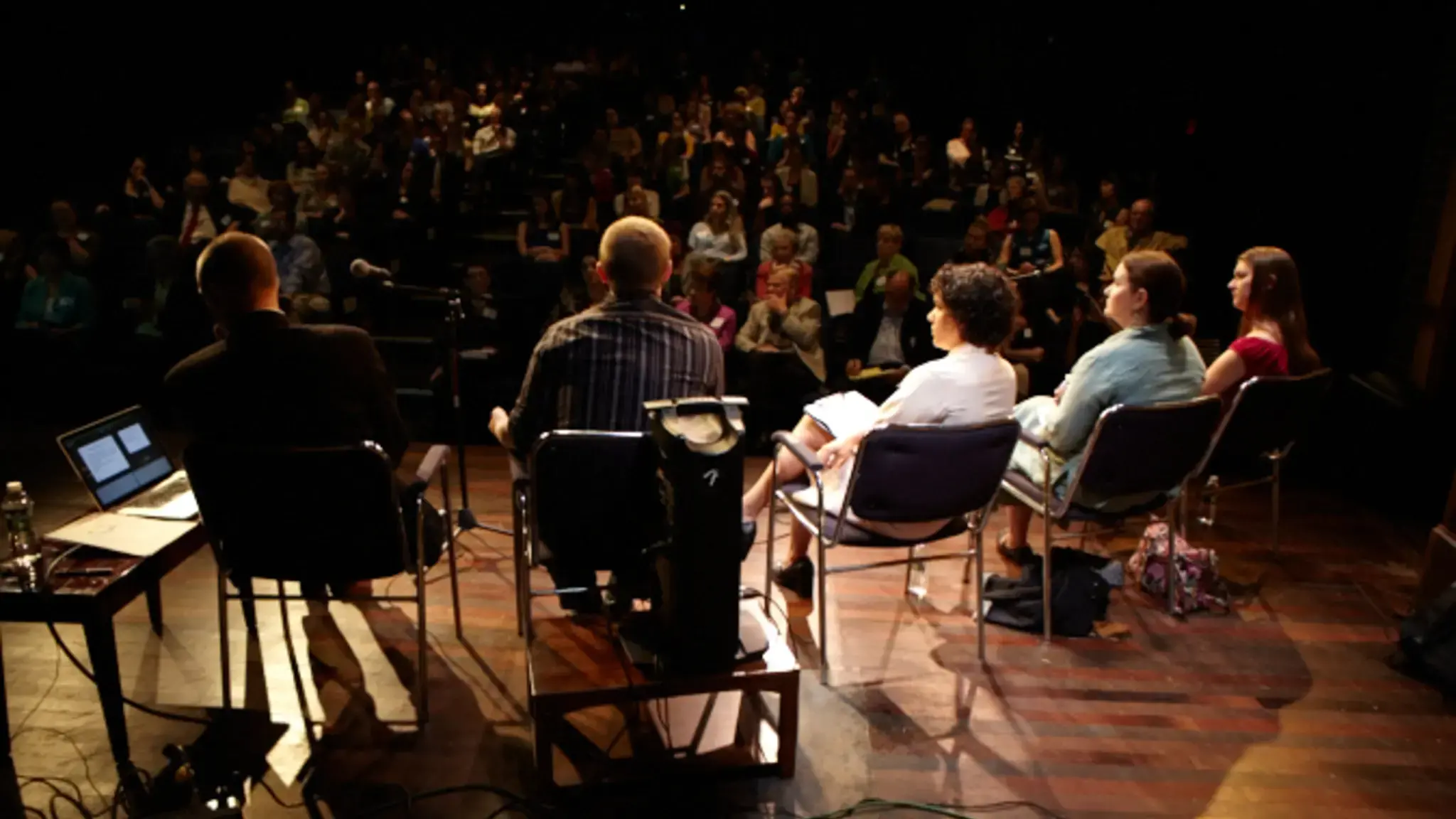

On March 23, 2012, The Pew Center for Arts & Heritage hosted Alan Brown of WolfBrown, and Brad Erickson and Clayton Lord of Theatre Bay Area, for an event that brought together 150 arts leaders from all over Philadelphia. Brown and Lord presented the findings of an important national study on the “intrinsic impact” and value of the arts. The study took place over the course of two years and focused on 18 theaters around the country, including Philadelphia-area theaters Bristol Riverside Theatre, Arden Theatre Company, and People’s Light & Theatre Company. The study resulted in the publication Counting New Beans: Intrinsic Impact and the Value of Art. The research conducted at theaters within the Philadelphia region received support from The Pew Center for Arts & Heritage. Additional support for the study came from the Doris Duke Charitable Foundation, the Andrew W. Mellon Foundation, the National Endowment for the Arts, and other sources.
The event, which was held at the Arden Theatre, was attended by local artistic leaders from theaters, dance groups, museums, and other cultural organizations. The first 90 minutes featured an overview of study’s main findings, and the second half of the event included live feedback from representatives of the Philadelphia-area theaters that participated in the study.
Amy Wilson of People’s Light & Theatre mentioned that the research findings helped to illuminate how diverse the theater’s audiences are, and discussed how staff might work to incorporate audience experiences into future programming. Leigh Goldenberg explained that Arden Theatre staff overestimated their audience’s discomfort level when viewing daring or controversial performances. The numbers showed the Arden that this research can be used not only to inform programming, but to enrich their audience’s future experiences by challenging them even more. Rayna Adams discussed how the process aided Bristol Riverside in checking impact against goals and in responding quickly to audience feedback. Providing a more in-depth playbill for audiences was one result of that new line of thinking.
Takeaways from the research report center around the motivations of theater patrons; their emotional, intellectual, and social responses to a participating theater’s seasonal offerings; and the process of receiving and utilizing critical feedback, among many other key points. Brown stressed the importance of allowing audience members to see how others answered intrinsic impact surveys, in order to engage them even further in the process of collecting and analyzing the research. Such practices will encourage audience members to develop a stronger connection to a theater—a strong takeaway for the three Philadelphia-area theaters involved in the study.
Attendees were asked to consider the next steps in the study of intrinsic impact for arts organizations. Now that the sector knows how to collect this information, cultural leaders are equipped to synthesize and use the results in order to bring about positive change in organizational impact on audiences. As Brown noted, “This is about arts organizations holding themselves accountable for their artistic choices. The really important part is when organizations use this data to have conversations they normally wouldn’t have.”
Visit intrinsicimpact.org for more information on how to take these next steps in your organization.